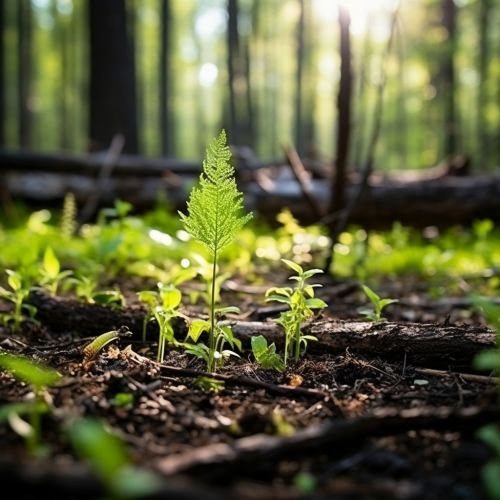Resprouting
Introduction
Resprouting is a plant physiological adaptation that allows plants to regenerate from their existing root systems after they have been damaged by environmental stressors such as fire, drought, or herbivory. This process is a key survival strategy for many plant species, particularly in regions with frequent disturbances.
Mechanism of Resprouting
Resprouting is initiated when a plant's above-ground parts are damaged or destroyed. The plant's meristematic tissues, located in the root system, are stimulated to produce new shoots. These shoots grow upwards, utilizing the existing root system for nutrient and water uptake. The ability to resprout is determined by a plant's genetic makeup, its age, and the severity of the damage it has sustained.


Factors Influencing Resprouting
Several factors influence a plant's ability to resprout, including the species' inherent resprouting ability, the age of the plant, the severity of the damage, and the environmental conditions.
Inherent Resprouting Ability
Some plant species are more capable of resprouting than others. This is often a result of evolutionary adaptations to environments with frequent disturbances. For example, many plant species in fire-prone ecosystems have evolved the ability to resprout quickly after fires.
Age of the Plant
The age of the plant can also influence its ability to resprout. Younger plants often have more vigorous growth and a higher capacity for resprouting than older plants.
Severity of Damage
The severity of the damage sustained by the plant can also impact its ability to resprout. Plants that have been severely damaged may not have enough stored resources in their root systems to support new growth.
Environmental Conditions
Environmental conditions such as soil quality, availability of water, and temperature can also influence a plant's ability to resprout. Optimal conditions can enhance resprouting, while harsh conditions can inhibit it.
Ecological Significance of Resprouting
Resprouting has significant ecological implications. It allows plant communities to recover quickly after disturbances, maintaining biodiversity and ecosystem stability. Resprouting also plays a crucial role in the carbon cycle, as it enables plants to quickly reestablish their photosynthetic capacity, thereby sequestering carbon dioxide from the atmosphere.
Resprouting in Different Ecosystems
Resprouting is a common strategy in many ecosystems around the world, including forests, grasslands, and deserts. It is particularly prevalent in ecosystems with frequent disturbances, such as fire-prone forests and drought-stricken grasslands.
